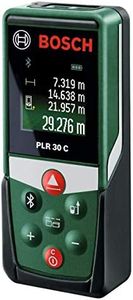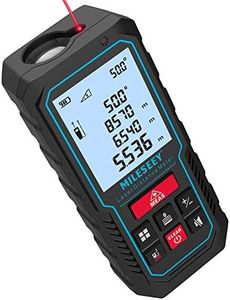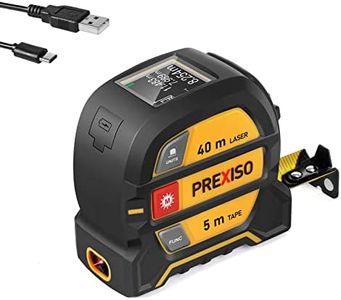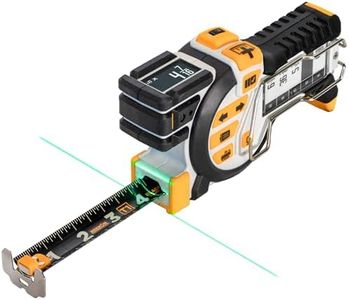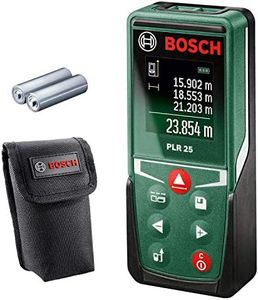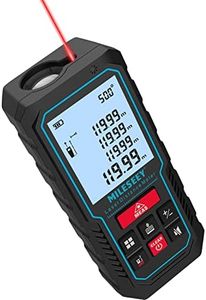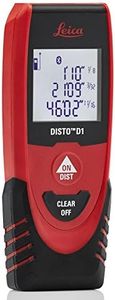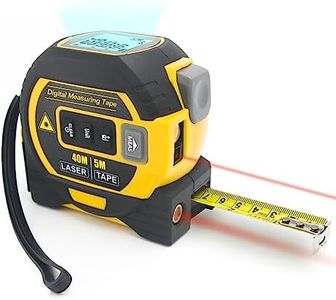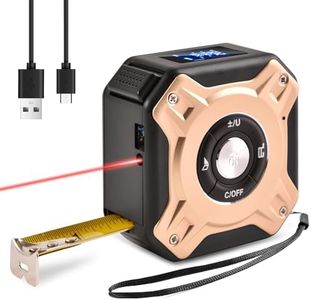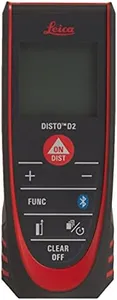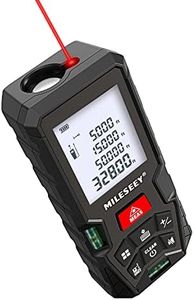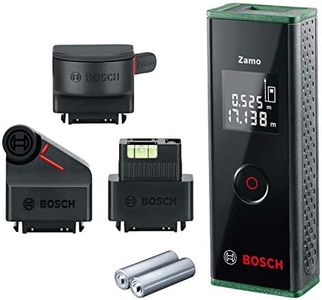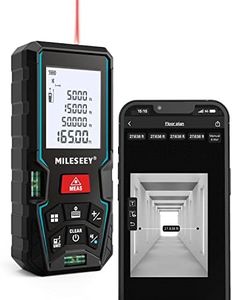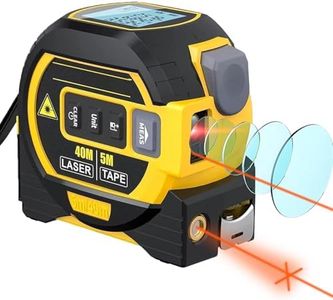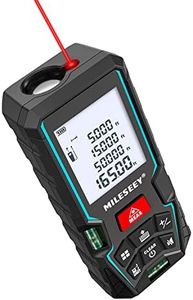We Use CookiesWe use cookies to enhance the security, performance,
functionality and for analytical and promotional activities. By continuing to browse this site you
are agreeing to our privacy policy
10 Best Laser Measure Tapes
From leading brands and best sellers available on the web.Buying Guide for the Best Laser Measure Tapes
Choosing a laser measure tape can make measuring tasks faster, easier, and more accurate compared to traditional tape measures. Whether you’re a DIY enthusiast, a professional contractor, or just someone looking to measure rooms for furniture, understanding the main specifications will help you find an option that suits your tasks without over- or under-buying on features. Take note of what types of spaces and objects you’ll be measuring most often and what level of convenience you need, as this will help guide your choices.Measuring RangeThis spec tells you the maximum distance the device can measure. It’s important because if you try to measure a space longer than the device can handle, it won’t give you accurate results. Small ranges (up to 30-40 feet) are usually good for indoor use, like measuring rooms or furniture. Medium ranges (40-100 feet) can handle medium-sized spaces and larger homes. Long ranges (over 100 feet) are better for outdoor or very large spaces, such as construction sites. Consider the spaces you’ll be measuring most frequently—pick a range just above your largest expected measurement to keep things accurate and simple.
AccuracyAccuracy is about how close the measurement is to the true distance. This is important because precise measurements can make a big difference, especially for construction or renovation work where small errors add up. Most household tasks are fine with an accuracy of about 1/8 inch (±3mm), but if you need exactness for professional work, look for higher accuracy, closer to 1/16 inch (±1.5mm). For simple home use or rough estimates, ultra-high precision isn’t necessary; pick an accuracy level that matches the level of detail your tasks demand.
Display TypeThe display is how you read your measurements. Bigger, backlit screens are easier to read in low light or at a distance, which can be helpful in dim rooms or outdoors. Simpler screens may be fine for basic indoor use but can be hard to see in sunlight or from different angles. Think about where you'll use your laser measure tape most—if you often work in various lighting or need to jot down multiple measurements quickly, a clear, bright display is a useful feature.
Measurement FunctionsSome laser measures just provide basic length measurements, while others can calculate area, volume, distances using the Pythagorean method, or even store measurements. Advanced functions are useful if you want to measure room sizes, calculate material amounts, or work with complex layouts. If all you need is to check simple distances, basic models are enough. If you do lots of projects or need calculations on the spot, consider a model with more built-in functions.
Durability and ProtectionThis refers to how well the device will withstand drops, dust, and water. Durability is important if you are using the tape on job sites or outdoors, where it might get wet or dirty. Devices come with various ratings like water resistance or drop protection. For home indoor use, you may not need robust protection, but if your environment is harsher or you’re likely to drop the device, prioritize a more rugged, sealed model.
Battery Type and LifeLaser measures run on batteries, either replaceable (like AAA) or rechargeable ones. Battery life is significant because a longer life means fewer interruptions during projects. Rechargeable batteries are convenient and eco-friendly but may take time to recharge, while replaceable batteries let you swap and continue working instantly. Choose based on how long and how often you use the device, and your preference for convenience or eco-friendliness.
